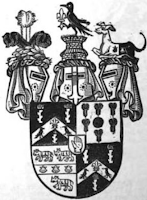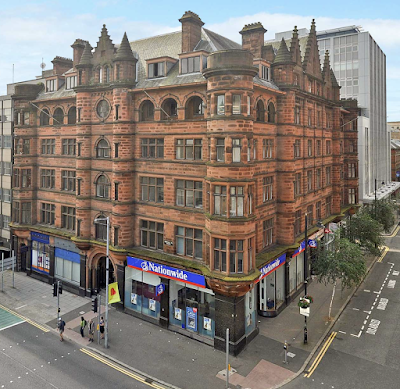THE 8TH AND PRESENT EARL OF BELMORE TALKED TO JENNY CATHCART IN 2011
LORD AND LADY BELMORE LIVE AT THE GARDEN HOUSE, CASTLE COOLE, COUNTY FERMANAGH
In May, 1949, Major Galbraith Lowry-Corry was serving with the Inniskilling Fusiliers in Malaya when his commanding officer handed him a telegram addressed ‘Lord Belmore.’
It signalled that he, a great-nephew of the 4th Earl, had become the 7th Earl of Belmore, for his bachelor cousin, Cecil Lowry-Corry, the 6th Earl, had just died.
He took emergency leave and returned home immediately.
When he and his family arrived home at Castle Coole, County Fermanagh, they had their photograph taken on the steps of the south-facing colonnade.
A tall man of aristocratic bearing, Lord Belmore stands protectively beside Lady Belmore and their daughters, Lady Anthea and Lady Wendy Lowry-Corry.
Their son and heir John [present 8th Earl] was born in 1951.
Because of death duties, sweeping changes were required to secure the future of Castle Coole.
The house and 70 acres of land were transferred to the National Trust and, by 1955, parts of the house were open to the public.
However, the family retained ownership of the contents and are able to use some of the private rooms in the castle.
In the same year, Lady Belmore commissioned Raymond Piper to make drawings of Castle Coole as a birthday present for her husband.
In 1960, Derek Hill was asked to paint the family in a conversation piece for which they sat in the saloon.
This painting was especially poignant, given that Lord Belmore died later in the year aged just 47.
John Corry became the 8th Earl of Belmore.
His earliest memories of Castle Coole are of the Christmas turkey belonging to the National Trust caretakers, Mr and Mrs Wright, which he freed from its pen in the basement.
This landed him in a lot of trouble with his parents.
He recalls an idyllic childhood with private lessons in the nursery in the east wing, fishing for pike and tours of the demesne with his father.
During the summer holidays he enjoyed the company of friends including Alan [the present Viscount Brookeborough] and Christopher Brooke from Colebrooke, and Gerald Grosvenor [6th Duke of Westminster] from Ely Lodge.
He attended the Portora preparatory school at Gloucester House, then continued his education as a boarder at Lancing College in Sussex, his father’s
alma mater.
After two years at agricultural college he returned to Castle Coole in 1974.
These were grim times in Northern Ireland.
Lord Belmore made a key decision to renovate the gardener’s cottage in the walled garden where he and his family now live, although their eldest son [Viscount Corry] still uses the private rooms in Castle Coole.
Gradually and tastefully he refurbished and extended it in collaboration with architects Richard Pierce, John O’Connell and Mary Kerrigan, local builder, Terry McGovern and Robert Gormley of Precision Joinery.
Since there was not a single painting of Castle Coole in existence, he commissioned the Enniskillen-born artist, TP Flanagan, to produce a series of watercolours and oils.
Lord Belmore developed a good working relationship with the National Trust and over the last 25 years he has been adding to the family portraits and paintings with key pieces, which are in keeping with the style and period of the house.
He was pleased to take me [Jenny Cathcart] on a tour of the art works.
In the entrance hall, he drew my attention to the warmth of colour in the Cuban mahogany doors and the scagliola columns.
At this time of year, when the National Trust diligently puts the house to bed after the summer season, calico covers are draped on the furniture and lamps and chandeliers are muffled in muslin to preserve them from the dust.
We make our way to the breakfast-room to see Giovanni Battista Cipriani’s ‘Heavenly Twins’ Castor and Pollux, which Lord Belmore believes is now the best painting in the house.
Dated 1783, it was one of three paintings commissioned for Houghton Hall in Norfolk.
Lord Belmore purchased it in 1990 and it is so large that it had to be brought frameless through the breakfast room window.
He also bought ‘The Flight into Egypt’, by an unknown north Italian painter, which dates from the early 18th century.
It hangs harmoniously alongside Hugh Douglas Hamilton’s portrait of the adventurous, impetuous 2nd Earl who was Governor of Jamaica from 1828–32.
He took his family on a grand tour of the Mediterranean on the brig Osprey and then furnished Castle Coole in the regency style almost bankrupting the family in the process.
In the same room is ‘Miss Morgan’ by the Irish painter Garrett Morphey, which was singled out by the late Sir Oliver Millar, the Queen’s picture surveyor, as an excellent example of late 17th century Irish portraiture.
In the north-facing drawing-room hang original portraits of Armar Lowry-Corry, who built Castle Coole from 1788-95 and two of his three wives.
These are by the two most eminent Irish portrait painters of the day, Hugh Douglas-Hamilton and Robert Hunter.
The first wife, Lady Margaret Butler, was the eldest daughter of the Earl of Carrick.
The second, Lady Henrietta Hobart, daughter of the Earl of Buckinghamshire, chose Belmore, the name of the nearby mountain, when the peerage was offered to her husband.
The [1st] Earl’s third wife was Mary Anne Caldwell.
Near the main staircase is a charcoal drawing of doves by Mildred Ann Butler, a study for a watercolour.
Here too is a small oil painting by Hans Iten, a Swiss damask designer who lived in Belfast and a painting by Nathaniel Hone the Younger, a landscape at Cassis in the south of France.
We pause on the landing to look at Belfast-born Peter Turnerelli’s bust of the Duke of Wellington, champion of Home Rule for Ireland and friend of the 2nd Earl of Belmore.
In 1978, a gift to the National Trust from a private benefactor made it possible to refurbish the first floor Bow Room with a brand new set of chintz curtains and wallpaper copied from an original sample discovered behind a mirror.
In this room is another of Lord Belmore’s acquisitions, ‘Le Pont du Gard at Nimes,’ a painting of the Roman aqueduct by Nathaniel Hone the Younger.
When, in 1988, ‘The Leslie Conversation Piece,’ which had hung at Castle Leslie in County Monaghan, came up for sale, Lord Belmore bought it from a picture dealer in London.
Painted in 1770, this work by Mortimer depicts some of the most colourful and prosperous landowners of the day.
Lord Mornington, who was ennobled by the king for his music making, entertains the company at the piano.
The painting now hangs in the state bedroom which was kitted out in regal red for a planned visit by King George IV, who never came but preferred to dally with his mistress at Slane Castle.
Lord Belmore has donated some paintings to the Castle Museum in Enniskillen of which he is a patron.
These include ‘Still Life with Garlic’, by William Scott, which he describes as 'one of the strongest and most important 20th century paintings in the North West of Ireland'.
‘Pears’ by Scott is also in the museum, as well as the above-mentioned ‘The Saloon at Castle Coole’ by TP Flanagan.
Published by the Ulster Historical Foundation in 2007, the fully illustrated book
Belmore: The Lowry Corry’s of Castle Coole 1646 - 1913 has been one of Lord Belmore’s most important projects, for it traces the history of Castle Coole and the union of the Lowry-Corry families.
Peter Marson was commissioned to write it and it was 12 years in the making.
When Lord Belmore was introduced to Patrick Prendergast by the artist, Philip Flanagan, he invited him to photograph the forgotten spaces of the attic and the basement at Castle Coole where the last vestiges of his boyhood life in the 1950s still remained intact: the 7th Earl’s travel trunk; the schoolroom with bookshelves still lined with books.
The photographer continued on the same theme in other country houses throughout Ireland including Lisadell in County Sligo.
These photographs appear in
Ancestral Interiors, published by the Irish Architectural Archive in 2010.
First published in April, 2011. The full interview can be read here.








































